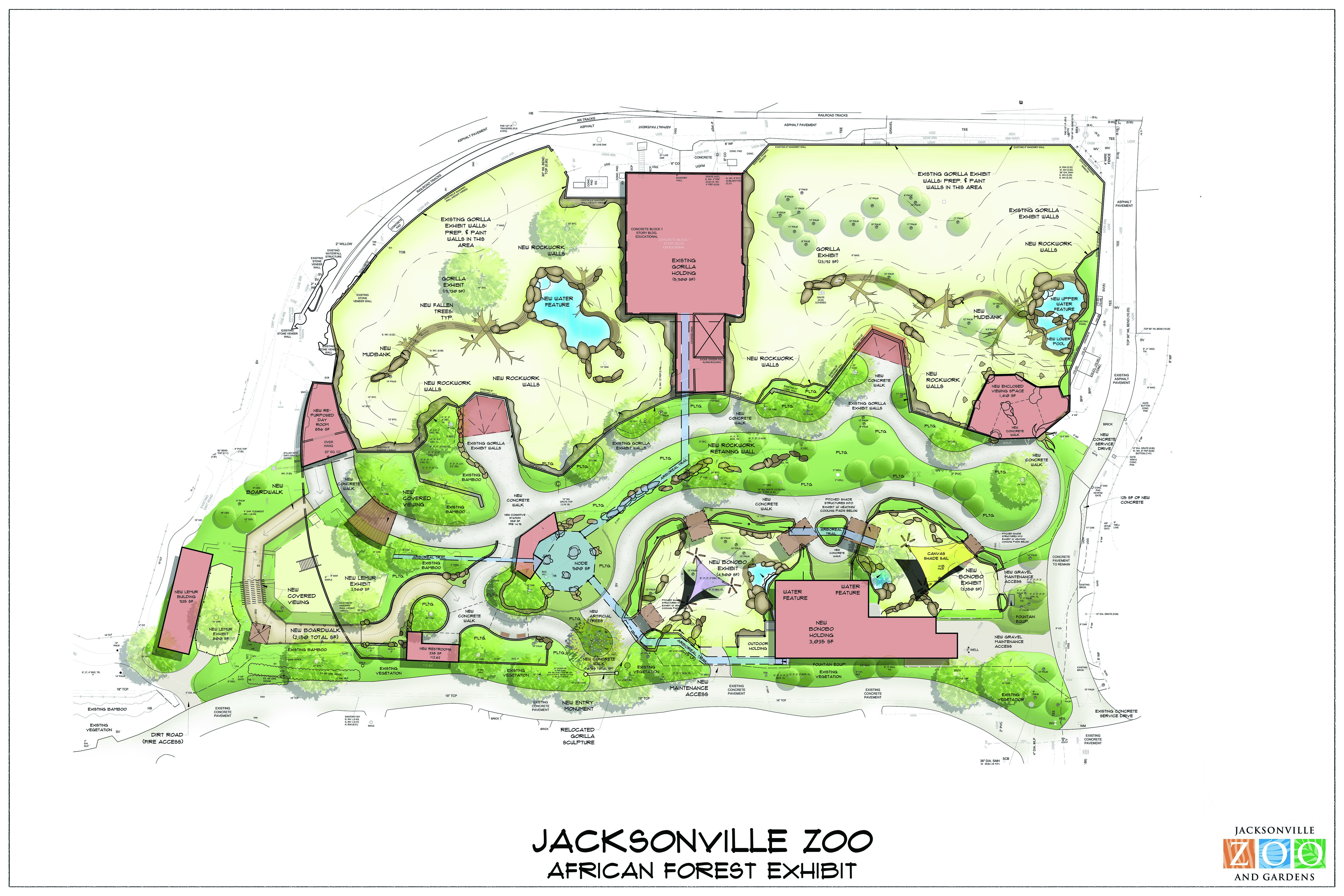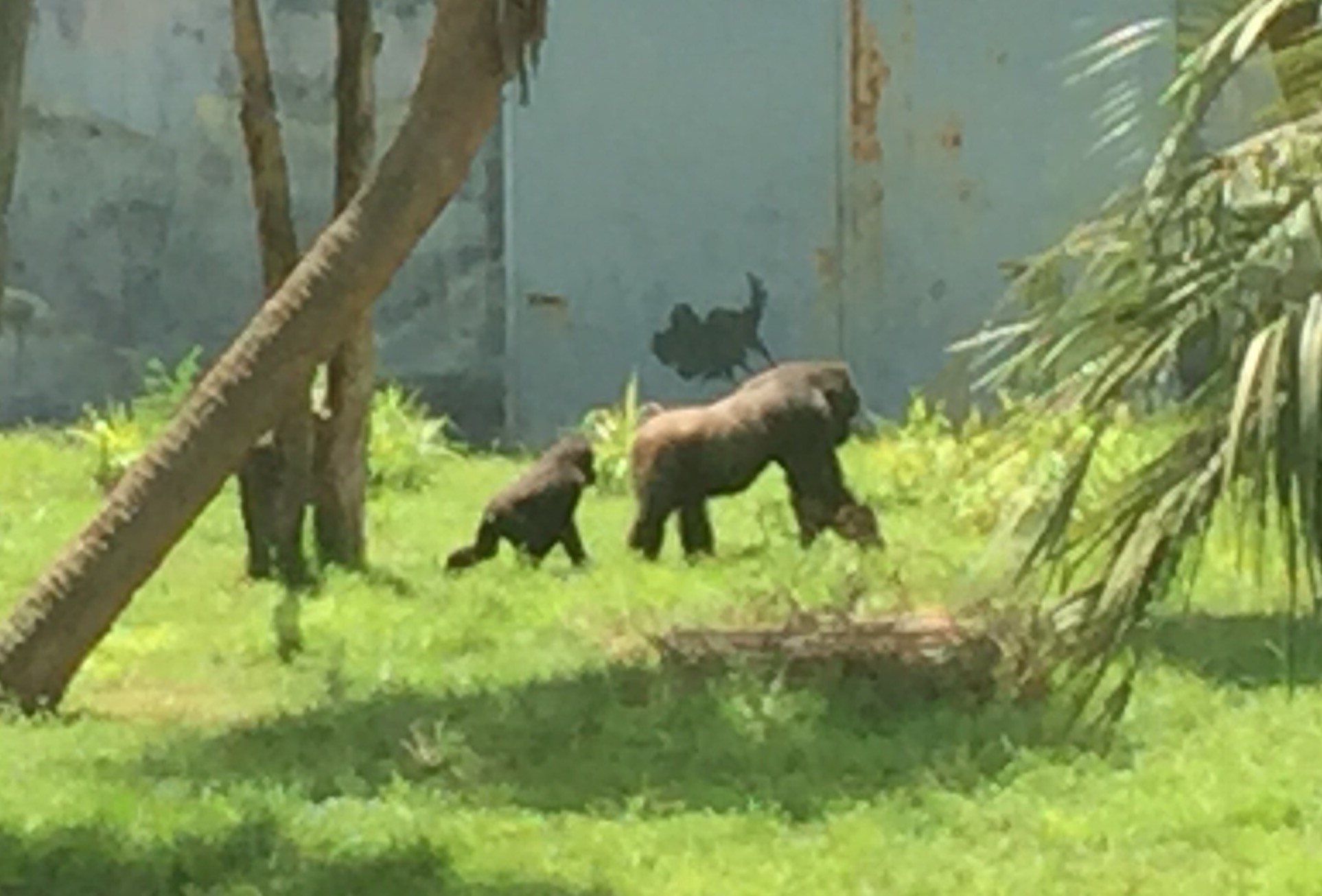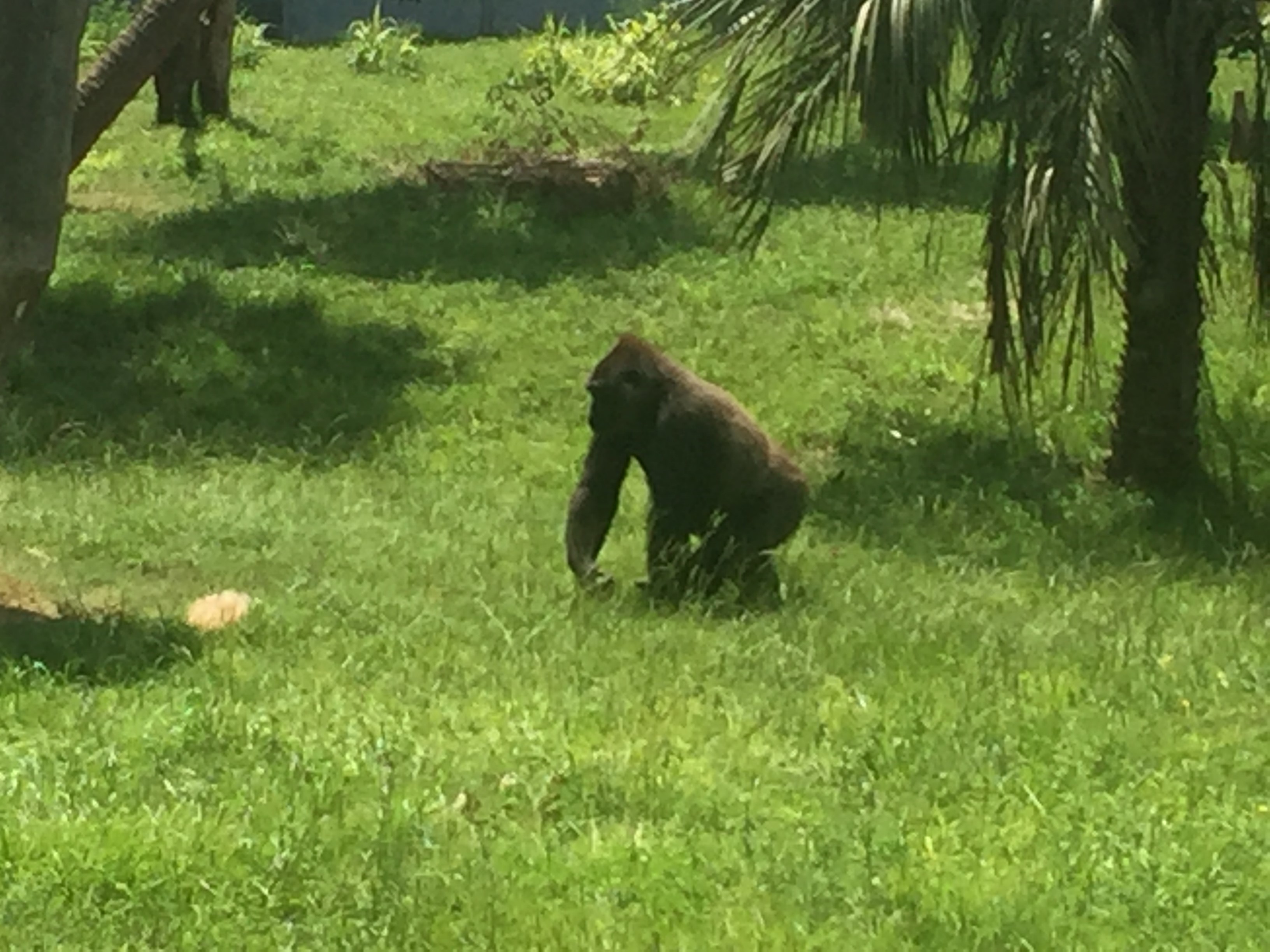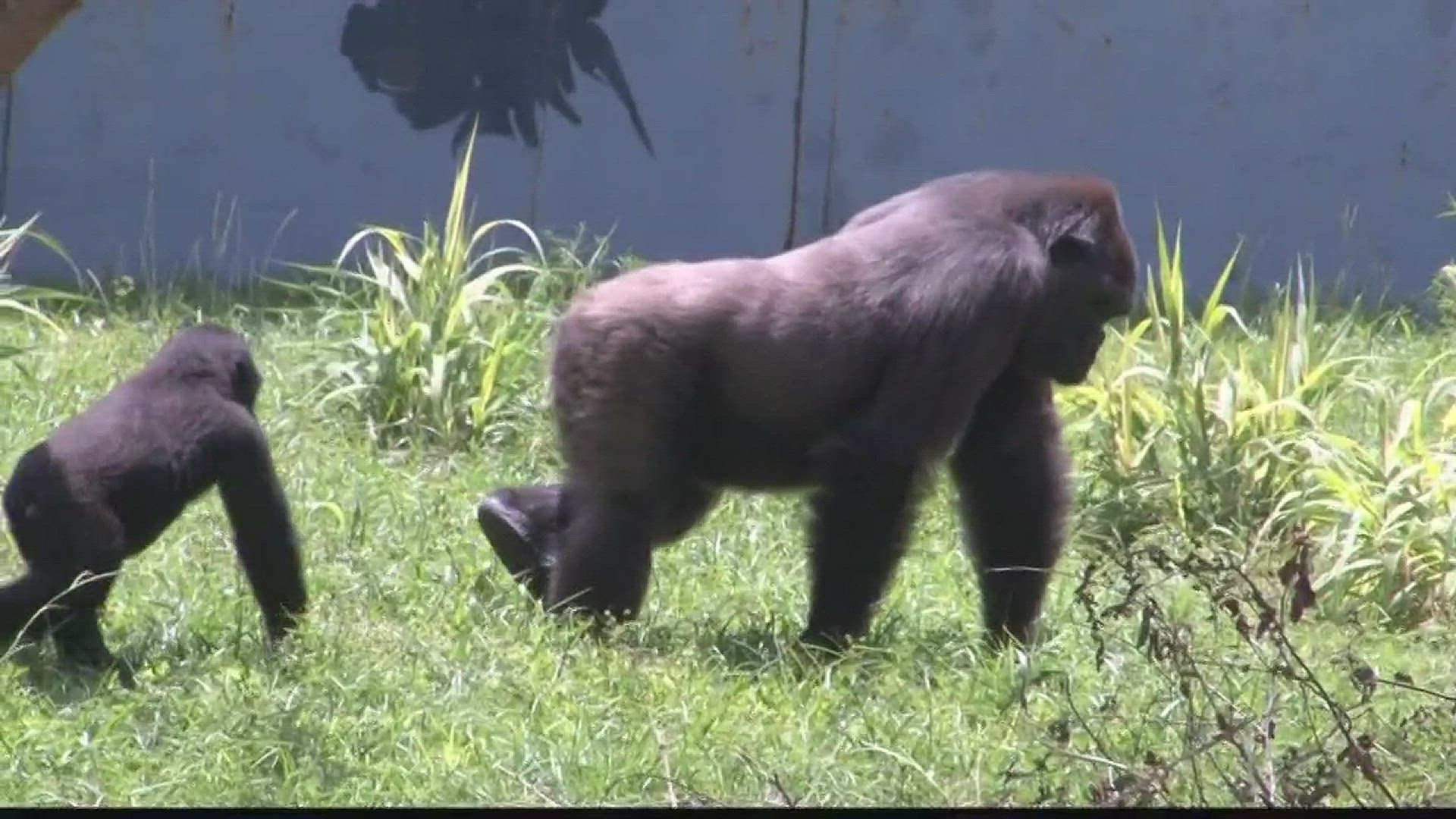JACKSONVILLE, Fla. - A few years ago, Jacksonville opened its nationally acclaimed "Land of the Tigers" exhibit. Now, it's the primates' turn.
"Gorillas, the mandrills, the bonobos, the lemurs - these are high-profile animals," the Zoo's deputy director of animal care and conservation Dan Maloney told First Coast News on Thursday, one day after the facility began dismantling its current "Great Apes Loop" section for a metamorphosis to become "African Forest".

"The yard will be re-contoured, the walls will look different," Maloney detailed. "There'll be a whole bunch of features that aren't there now."
Maloney said the current four habitats will expand to five and that mandrills - until now kept separate in an aging enclosure - will be commingled with the gorillas and Colobus monkeys, making for a more vibrant exhibit. He remarked that the bonobos have probably never seen the stars at night, saying wistfully that newer technology and design have paved the way for enclosures that will allow the animals to remain in the outdoor areas overnight.
"The bonobo exhibits don't exist yet and the lemur exhibit is going to be brand new, so it's going to transform the area," Maloney said.
But the driving philosophy is to enhance the primates' intellectual stimulation, he said.
"We're trying to acknowledge how smart these animals are, give them things to do, and stimulate them in ways," Maloney said.

To that end, he explained part of the strategy will include a manmade tree nearly 50 feet tall, accessible from each of the habitats via elevated 'trails'; enclosed but open-air walkways for the animals, similar to ones found in "Land of the Tigers".

"All the species will be able to get to the tree, just not at the same time," Maloney said, noting that commingling some of the primates could be dangerous to their well-being.
The 'tree' will be made hollow, allowing zoologists to climb from the inside and observe and interact with the animals up-close.
It'll also give the instinctively-inclined climbing primates a chance to expand their horizons, literally.
"Give them a perspective they've never had before," Maloney smiled. "They'll be able to go up and look out toward the giraffes, look out toward the guests," an interaction he added that the primates enjoy as much as the human visitors do.
Perhaps Maloney beamed most while explaining a touch screen system that, with practice and study, will eventually allow the gorillas and company to communicate with their human caretakers in unprecedented ways.
"We're going to be using them to really get an idea of preference as to what the animals might want to look at on-camera around the zoo; which keepers they prefer to be around more than others," he remarked with a smile that he hopes there'll be no hurt feelings!
Indeed, the high-profile animals are getting a higher living standard. But, Maloney promises, the $9 million overhaul will be a boon for us human types who marvel at our closest biological cousins.
"Hopefully it does exactly what you're talking about," he said. "It's going to engage our guests and get them excited, and hopefully they're going to want to help these animals in the wild."

The "African Forest" exhibit is expected to be complete in summer or Fall 2018.

